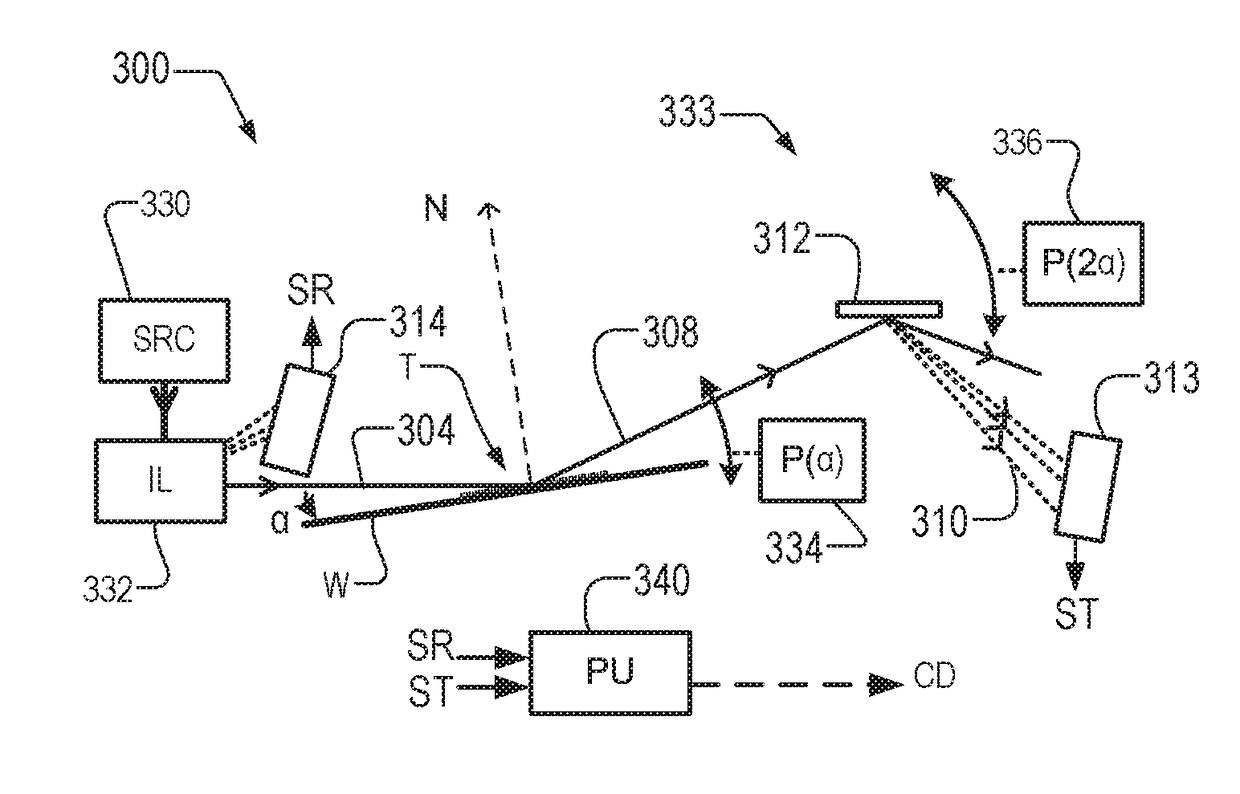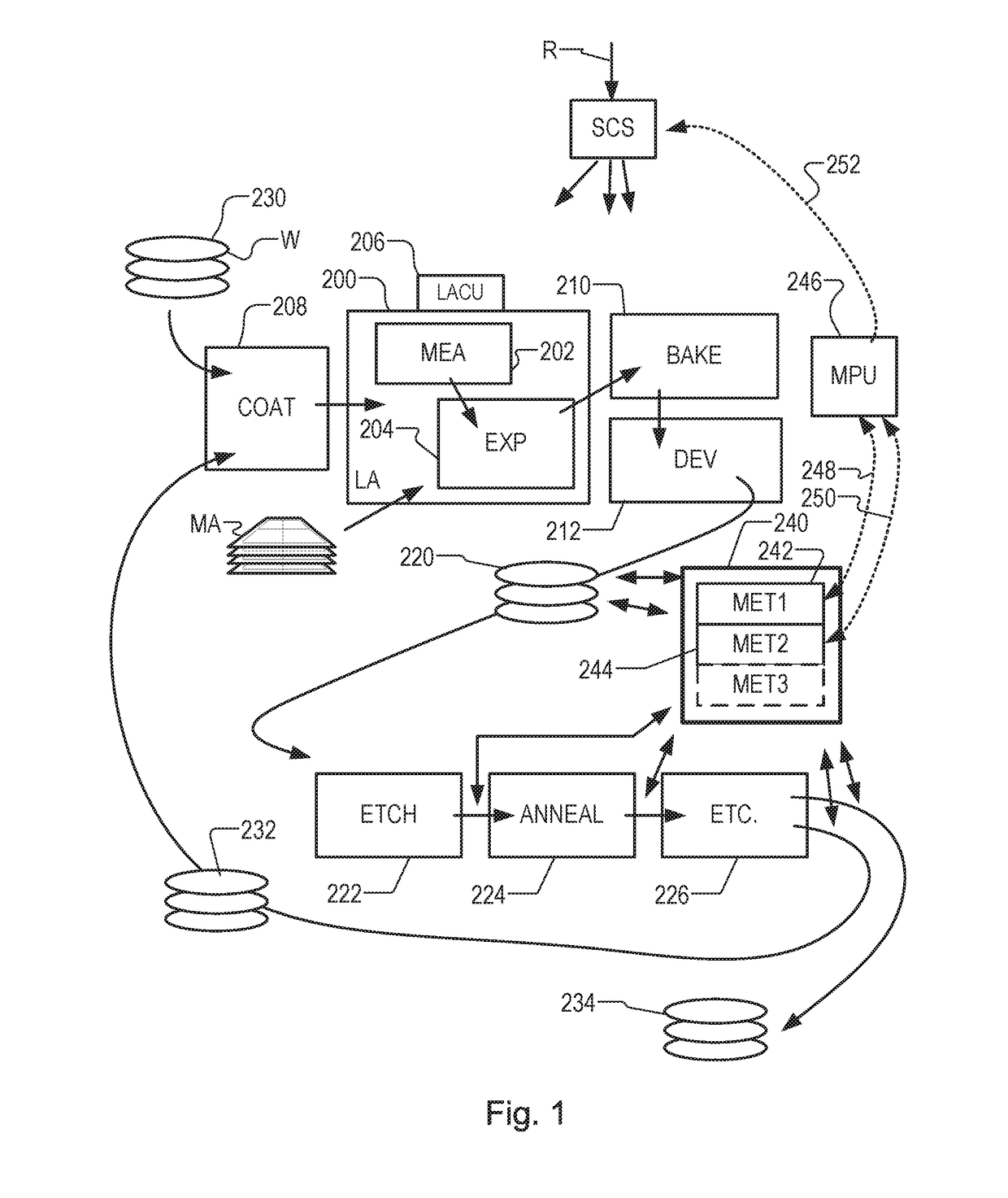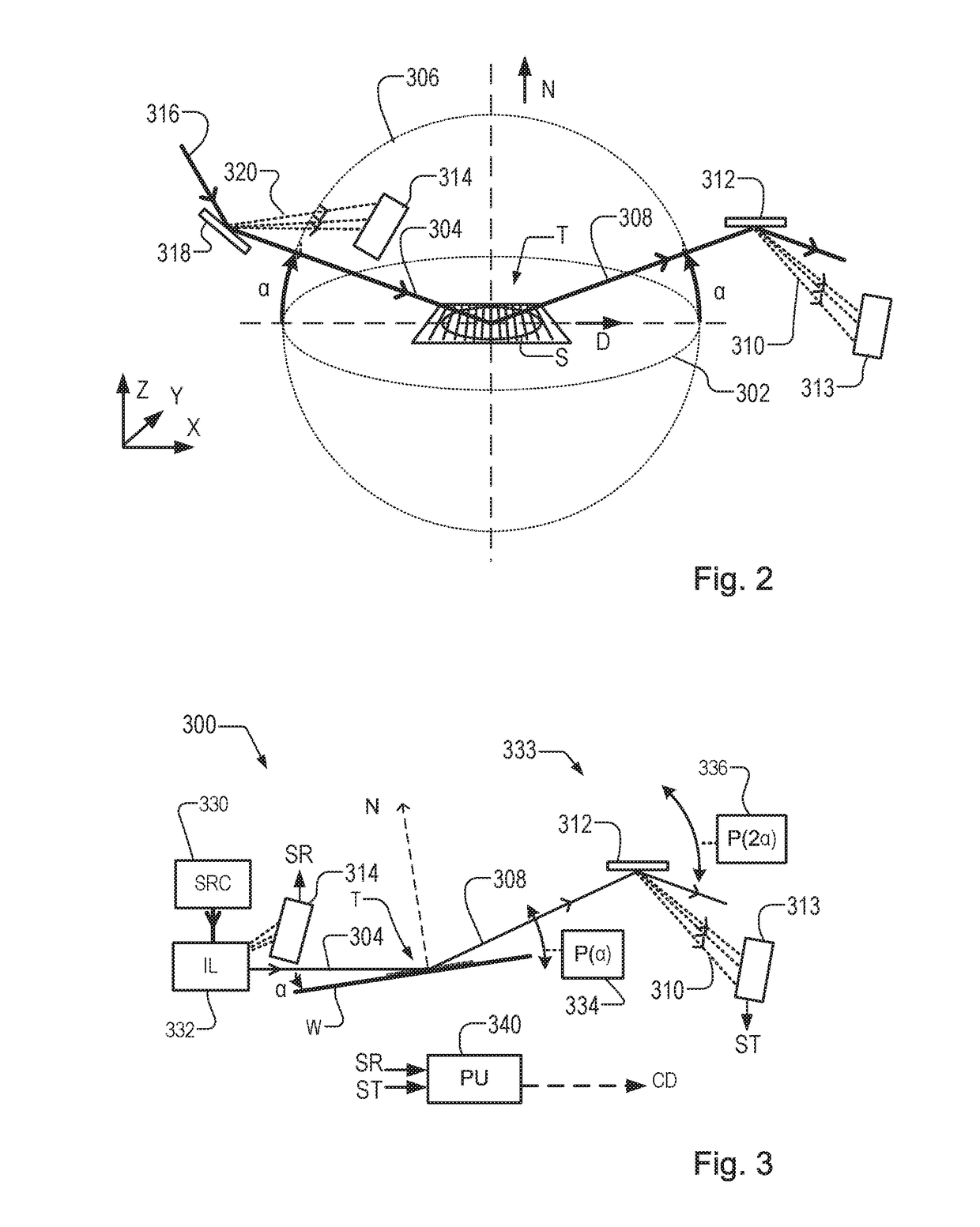Metrology Methods, Metrology Apparatus and Device Manufacturing Method
a technology of metrology and manufacturing methods, applied in the direction of photomechanical equipment, instruments, x-ray tubes, etc., can solve the problems of not being able to meet the typical dimensions of real product features, the method is made with optical wavelengths, and the performance specifications become ever tighter. , to achieve the effect of a higher angle of incidence and more accurate modeling of the periodic structur
- Summary
- Abstract
- Description
- Claims
- Application Information
AI Technical Summary
Benefits of technology
Problems solved by technology
Method used
Image
Examples
application examples
[0132]FIG. 12 shows a generic example of a hybrid metrology system in which first, second and optionally third metrology apparatuses are provided. Each metrology apparatus comprises a source SRC1 / 2 / 3, an illumination system IL1 / 2 / 3 and a detection system DET1 / 2 / 3. A hybrid metrology apparatus can be produced which includes both EUV metrology apparatus 244 for performing and longer-wavelength optical metrology apparatus 240 for performing more conventional scatterometry measurements. Both apparatuses may work simultaneously on the same parts or different parts of a same substrate W. The two apparatuses may in practice operate at different times, while sharing common components such as substrate handling and positioning systems. The metrology apparatuses may be integrated with either the lithographic apparatus LA itself or within the lithographic cell LC. Within the metrology processing unit MPU, dedicated modules 1210-1 / 2 / 3 are provided to process to some extent spectrum data receive...
PUM
| Property | Measurement | Unit |
|---|---|---|
| wavelengths | aaaaa | aaaaa |
| wavelengths | aaaaa | aaaaa |
| grazing angle of incidence | aaaaa | aaaaa |
Abstract
Description
Claims
Application Information
 Login to View More
Login to View More - R&D
- Intellectual Property
- Life Sciences
- Materials
- Tech Scout
- Unparalleled Data Quality
- Higher Quality Content
- 60% Fewer Hallucinations
Browse by: Latest US Patents, China's latest patents, Technical Efficacy Thesaurus, Application Domain, Technology Topic, Popular Technical Reports.
© 2025 PatSnap. All rights reserved.Legal|Privacy policy|Modern Slavery Act Transparency Statement|Sitemap|About US| Contact US: help@patsnap.com



